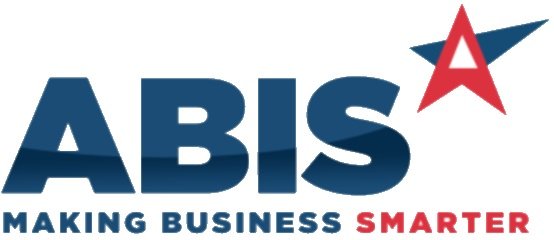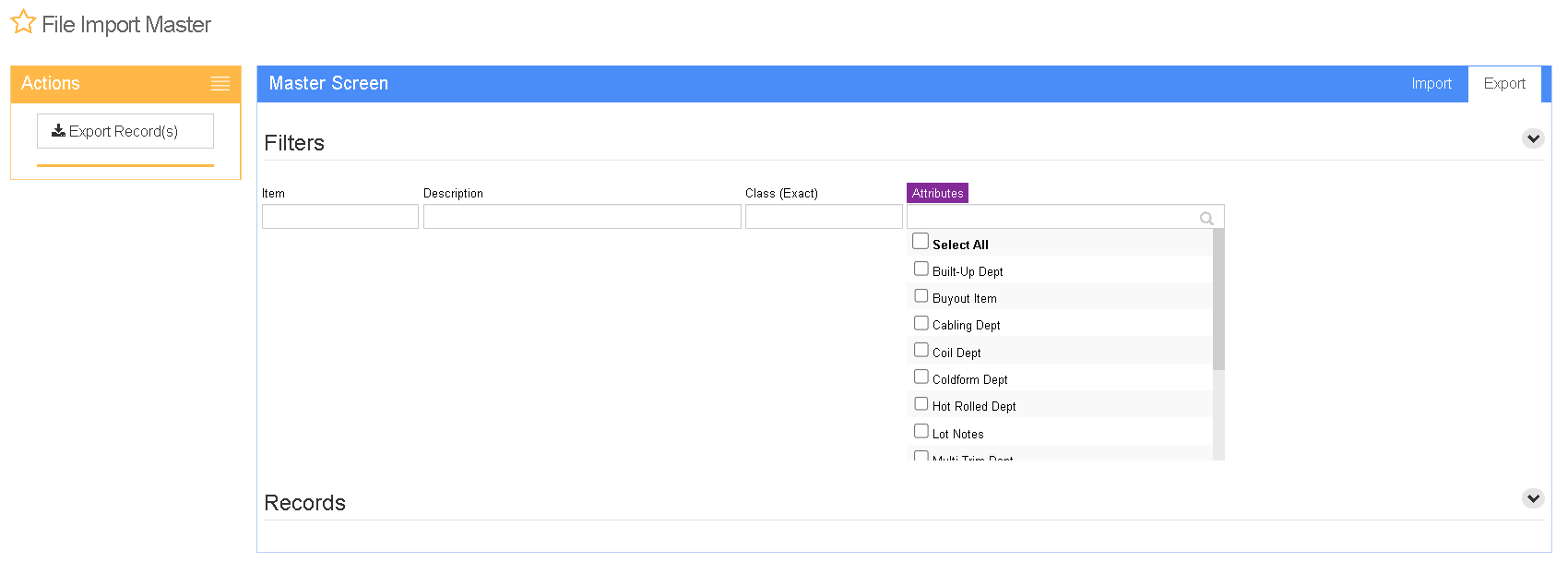Item Base Cost/List Price Update Guide
From Adjutant Wiki
Contents
- 1 General Import Template File Notes
- 2 Base Cost/List Price Import Notes
- 3 Base Cost/List Price Update File Data Scrubbing
- 4 Item Base Cost/List Price Update Screen (UPDATECP)
- 5 Cost Tier Import File Definitions
- 6 Cost Tier Import Reconciliation
- 7 Cost Tier Import Additional Steps
- 8 Cost Tier Import Database Tables
General Import Template File Notes
- Template files are typically generated from their respective Import screen using an 'Export Template' button.
- Using the 'Export Template' button from an updated system will help ensure that you are using the most up-to-date import file, and will help avoid errors.
- Templates generally (but not in all cases) contain 3 rows of header information.
- The first row is generally labelled with f1 through f## and is used to give a consistent column id to each data column. Do not remove this row unless instructed.
- The second row is labelled with the column data/field name. The values in this row are used for the file mapping screen. Editing these values is generally not needed and may make the field mapping process difficult.
- The third row (if present) is labelled either with the same values from row 2, or with more detailed field descriptions. The third row is available to create a customer-friendly name for the associated data column.
- The third row should be removed from the source file prior to importing. It will cause errors since it will be treated as the first import record on the file.
- Import files MUST always be saved as 'Microsoft Excel 5.0/95 Workbook (*.xls)' format until further notice. The import screens will generate errors if the file type is not correct.
- It is a good idea to perform a Mapping Table Import using a current source list before beginning on any imports. Without a current mapping table, the quality of imports can be compromised. The Mapping Table Import only needs to be run once on a newly set up Adjutant system. It does not need to be run before each import.
- Export a current list from the Mapping Table Import screen from an updated system (or contact your Implementation Consultant for an updated file).
- Perform a Mapping Table Import on the target system with the XLS file from the step above.
Base Cost/List Price Import Notes
The Item Base Cost/List Price Update is used to update Item Master price/cost fields, vendor quoted cost values, and can also be used to update Sales Order Configuration (SOC) controlling price/cost values.
Timing and Preparation
The cost/price update can is generally only needed during a go-live to update cost and price values that have changed during the course of the implementation. It can be run at any time to update the Item Master default cost and price values as needed. There are no special set-ups required, other than that the item record must exist.
For the vendor (C/V Part) quoted cost updates, the corresponding vendor or VPart # (Supplier Part #) must already exist. The update will not add C/V Part records.
For SOC cost/price updates, the SOC details must exist, with the Controlling Qty and Price/Cost Adjust fields checked. The update will only affect controlling quantity SOC questions.
General Notes
The Base Cost/List Price Update has three functions:
Item Master cost/price update: The Base Cost, Standard Cost, and List Price fields on the Item Master Settings tab can be updated with the corresponding values from the import file.
C/V Part quoted cost update: With the UpVPart column flagged as 'Y', and the appropriate entries filled in, matched C/V Part data can be updated with new quoted cost values and dates. The UpVPart features can be used on the same import file along with the Item Master Settings updates.
SOC cost/price update: With the SOCUpdate column flagged as 'Y', the Base Cost and List Price fields will update any matching SOC controlling quantity questions with the new values. When the SOCUpdate column is 'Y', the update will only affect SOC values. It will not affect Item Master Settings or C/V Part details.
Base Cost/List Price Update File Data Scrubbing
Every customer's data will have different issues that need addressing. Some of the issues will not make themselves visible until after the data has been imported and is in use during parallel testing. This is why it is critically important to perform an early import, and keep accurate notes on issues that need to be addressed on a supplemental import, or for a complete re-import.
The Item Base Cost/List Price Export screen can be used
Item Base Cost/List Price Update Screen (UPDATECP)
Menu Location: Transaction>>Importers/Exporters>>Item Control>>Item Base Cost/List Price Import
File Name(Header)/Browse: Use the Browse button to locate and select the completed Cost Tier import template file (in XLS format).
Export Template: Generates a blank Cost Tier import template file
Map Fields: Fields must be mapped prior to importing. If no changes have been made to the column headings, the mapping screen should show all green, and you can click OK to continue. If any of the Input Field Name columns on the left are red, single-click on the line on the left column, and then double-click the desired mapped field in the right column to complete the mapping. Repeat for any red lines on the left that should be mapped. If there are additional columns in the source file that should NOT be mapped, they can be left unmapped (displayed in red). Mandatory fields will require that they be mapped before clicking OK.
Default Owner: Sets the inventory owner for any cost tier lines with a blank owner value. This list is populated with Organization records that have the Inventory Owner attribute.
Default HedlFor: Sets the inventory holder for any cost tier lines with a blank heldfor value. This list is populated from the Item Held For Codes (HOLDER) Rule Maintenance record. If a catch-all code such as 'DEF' is used, make sure the HOLDER rule is set up properly.
Cost Tier Import File Definitions
Required fields are indicated with an *
*f1 - Item - Item Master item number
*f2 - Whse - Warehouse name
*f3 - Qty - Stocking unit quantity received at the associated cost tier
*f4 - Date - Received date for the associated quantity. This is also the date used to determine which cost tier is used for FIFO and LIFO methods.
*f5 - Cost - Cost per stocking unit for the associated cost tier
f6 - Owner - Inventory owner (Organization ID)
f7 - HeldFor - Inventory holder (Organization ID)
f8 - SerialLot - Serial or Lot# value for the associated cost tier item
f9 - OCost - Other cost associated with the cost tier (rare)
f10 - OOwner - Other owner associated with the cost tier (rare)
Cost Tier Import Reconciliation
Reconciling imported data should begin with spot-checking several records field-by-field for complete data import. Pick records from the source file that have the most data columns filled in. Verify that all source file data fields imported correctly and display as expected.
Review the Cost Tiers tab in Item Master for several imported records and verify that all imported data displays as expected. Review all cost method types in the drop-down.
Perform cost-related transactions with the imported records and verify that the Cost Tier Usage tab in Item Master shows the expected cost tier used.
Run the The Check/Correct Cost Tiers (MATCHCTALL) report and check for discrepancies and missing cost tier data.
Cost Tier Import Additional Steps
There are no additional steps needed for the cost tier import.
Cost Tier Import Database Tables
COSTSI - Each imported cost tier line creates a unique keyno in this table tied to the item, lot number, and tier date.
COSTFIFO - Each imported cost tier line creates a unique keyno in this table tied to the item and tier date.
COSTLIFO - Each imported cost tier line creates a unique keyno in this table tied to the item and tier date.
COSTUSAGE - The import doesn't create any data in the COSTUSAGE table, but any cost testing will create details in this table showing which cost tier was used for each transaction.


